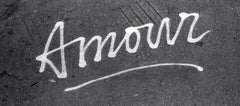Ian Gittler Black and White Photography
21st Century and Contemporary Contemporary Ian Gittler Black and White Photography
Archival Paper, Pigment
21st Century and Contemporary Contemporary Ian Gittler Black and White Photography
Archival Paper, Pigment
21st Century and Contemporary Contemporary Ian Gittler Black and White Photography
Archival Paper, Pigment
21st Century and Contemporary Contemporary Ian Gittler Black and White Photography
Archival Paper, Pigment
21st Century and Contemporary Contemporary Ian Gittler Black and White Photography
Archival Paper, Pigment
21st Century and Contemporary Contemporary Ian Gittler Black and White Photography
Archival Paper, Pigment
21st Century and Contemporary Contemporary Ian Gittler Black and White Photography
Archival Paper, Pigment
21st Century and Contemporary Contemporary Ian Gittler Black and White Photography
Archival Paper, Pigment
21st Century and Contemporary Contemporary Ian Gittler Black and White Photography
Archival Paper, Pigment
21st Century and Contemporary Contemporary Ian Gittler Black and White Photography
Archival Paper, Pigment
21st Century and Contemporary Contemporary Ian Gittler Black and White Photography
Archival Paper, Pigment
21st Century and Contemporary Contemporary Ian Gittler Black and White Photography
Archival Paper, Pigment
21st Century and Contemporary Contemporary Ian Gittler Black and White Photography
Archival Paper, Pigment
21st Century and Contemporary Contemporary Ian Gittler Black and White Photography
Archival Paper, Pigment
21st Century and Contemporary Contemporary Ian Gittler Black and White Photography
Archival Paper, Pigment
21st Century and Contemporary Contemporary Ian Gittler Black and White Photography
Archival Paper, Pigment
1990s Contemporary Ian Gittler Black and White Photography
Photographic Film, Giclée, Archival Paper, Black and White, Pigment, Arc...
Early 2000s Contemporary Ian Gittler Black and White Photography
Archival Paper, Photographic Paper, Black and White, Giclée, Pigment, Ar...
1990s Contemporary Ian Gittler Black and White Photography
Archival Paper, Photographic Paper, Photographic Film, Black and White, ...
1980s Contemporary Ian Gittler Black and White Photography
Photographic Film, Archival Pigment, Pigment, Giclée, Black and White, P...
1980s Contemporary Ian Gittler Black and White Photography
Photographic Film, Archival Paper, Photographic Paper, Black and White, ...
1990s Contemporary Ian Gittler Black and White Photography
Photographic Film, Archival Paper, Black and White, Pigment, Archival Pi...
1980s Contemporary Ian Gittler Black and White Photography
Photographic Film, Archival Paper, Black and White, Giclée, Pigment, Arc...
1980s Contemporary Ian Gittler Black and White Photography
Photographic Film, Archival Paper, Black and White, Pigment, Archival Pi...
1980s Contemporary Ian Gittler Black and White Photography
Photographic Film, Archival Paper, Black and White, Pigment, Archival Pi...
1990s Contemporary Ian Gittler Black and White Photography
Archival Paper, Black and White, Archival Pigment, Photographic Film, Pi...
Early 2000s Contemporary Ian Gittler Black and White Photography
Archival Paper, Archival Pigment, Black and White, Photographic Film, Pi...
1980s Contemporary Ian Gittler Black and White Photography
Photographic Film, Archival Paper, Black and White, Giclée, Pigment, Arc...

